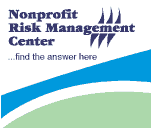|
July 18, 2007
Guidelines for Establishing Rental/Lease Policy
Establishing policies for the rental, lease and use of your facilities will make it clear to all parties what is expected. A policy will be set by the board and followed by the staff. An established policy will help the executive director explain the conditions for permission to use your facilities and, when necessary, the reasons for refusal. Such explanations should be in written form and made available to groups making application to use your buildings or grounds.
A policy should establish when your facilities may be used (perhaps not on Sabbath and/or holidays, for instance), and by whom (nonprofits only, for-profits whose products or services match your mission). You can chose to make your facility available under special or emergency conditions to municipal, county or state officials for governmental purposes.
The organization should consider:
- Will there be a time limit on the number of hours a group can use the facility? Consider staff availability, and scheduled use of the facility by clients or service recipients.
- What is the maximum number of people allowable per room established by city and fire officials?
- Should fees be charged? If so, what determines the amount of the fee?
- Type of Facility. The fee for the use of a gymnasium, auditorium or indoor swimming pool may be higher than the fee charged for a meeting room. Larger areas will accommodate more people and will require more light, heat, maintenance and staff.
- Time of Use. Use during normal, non-program working hours often will necessitate hiring extra staff.
- Use of Staff. It may be necessary to impose a special charge if a staff member is asked to work extra hours or is assigned special duties. In most instances, outside groups should be responsible for providing their own qualified leadership. However, if you have a swimming pool, you might want to require that the area to be under supervision of your staff.
- Nonprofit Versus For-Profit Use. Would use by profit-making groups endanger your tax-exempt status?
- What is the necessary number and qualifications of supervisory and security staff for the occupancy and use of the facility?
- Should the equipment and facilities be inspected by the nonprofit for breakage and damage after use by each group?
- Who is responsible for any breakage or damage, and how closely to the original should repairs/replacement be expected to render the item?
- Will you give instruction on proper use of equipment (such as, sports equipment, swimming pool) as a condition of use?
- Will you require that the group returns the facility in the same condition they find it?
- How will you inform outside groups of fire regulations, exits and procedures for the protection of patrons?
- Will you require a one-day certificate of insurance coverage from the groups using your facilities?
Once established, take steps to educate the members of your board of directors and the staff about the policy and the procedure outside groups should be instructed to use to apply for use of your facilities.
S A M P L E
Hold Harmless Agreements
(Type: limited)
[Name of Organization*] agrees to indemnify, defend and hold harmless [Name of Nonprofit] and/or any officer, employee or other representative of [Name of Nonprofit] from and against any and all claims, demands, suits, actions, proceedings (formal or informal), investigations, judgments, deficiencies, damages, settlements, liabilities and expenses (including reasonable legal fees and expenses of counsel acceptable to [Name of Nonprofit]) as and when incurred arising out of, based upon or in connection with the [description and date of activity – e.g., use of Name of Nonprofit’s headquarters for ABC Organization’s annual fundraising dinner], except for damages arising out of bodily injury to persons or damage to property resulting directly from the sole negligence of [Name of Nonprofit].
 |



